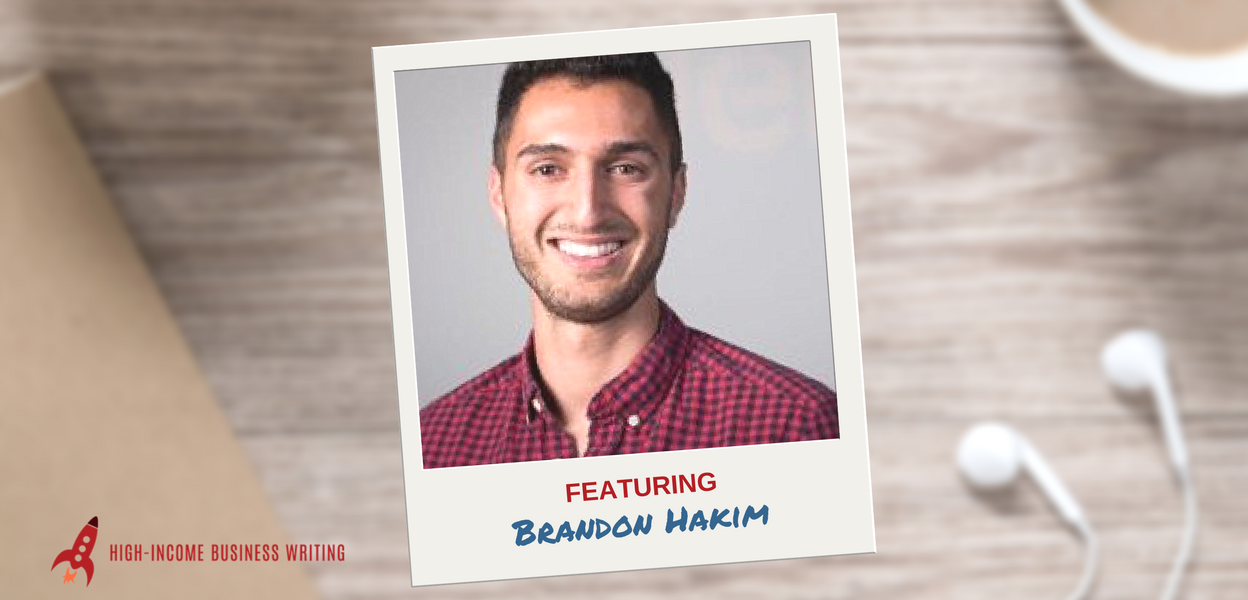I love to read
In fact, I have more books I want to read than I have time to read them.
Sound familiar?
Yes, I’ve tried some speed-reading courses. They helped, but I’ve yet to reach a level where I can read 50+ books a year.
So when I came across Brandon Hakim’s techniques on how to read and absorb dozens of books a year, I was intrigued.
Just by applying a few of his simple ideas, I’ve read two books in the past two weeks — something that would have normally taken me two months to accomplish.
In this interview, Brandon will explain how he reads over 300 books a year. He describes a key mindset shift you need to make in order to get to this level. Plus a handful of practical techniques to help you get through nonfiction books much faster.
The notes that follow are a very basic, unedited summary of the show. There’s a lot more detail in the audio version. You can listen to the show using the audio player below. Or you can subscribe in iTunes or on Stitcher to get this show delivered straight to the Podcasts app on your smart phone, tablet or iPod.
Tell us about yourself
Brandon Hakim is an entrepreneur, writer and restaurant owner. He’s developed several online courses related to productivity, life-long learning and getting the most out of business and self-improvement books.
How did reading and absorbing information become a priority for you?
After finishing business school, Brandon took over his father’s restaurant. The restaurant was not doing well, and Brandon quickly found his business school education didn’t help much.
Brandon quickly learned he could get better, more relevant advice from one book than his whole college education. As additional problems came up in his business, he turned to books for answers.
He soon became obsessed with reading and absorbing information. Today, he reads about one book a day and his restaurant business is doing great.
Give us an overview of the process you use
You have to start by changing your mindset. You have to shift from reading things to have a conversation (as in school) to reading things to extract information you can use.
How do you know what information is actionable and what isn’t?
Start by previewing the book. Don’t read it from beginning to end. Look through the table of contents to identify how the book is organized and what parts you could apply to your life or business. Read the back cover. Dip into different sections and see what parts resonate.
If you’ve identified a few sections that resonate with you, start by reading those sections. But, if many sections resonate, then you can start reading from the beginning.
While reading, continue to look for things you can skip, such as stories, bullet points and descriptions. Look for things that take up space but don’t add much value. Sometimes there’s nothing to skip, but that’s rare.
Sometimes stories help you understand and retain information. But sometimes stories aren’t relevant to your situation and, even if they are, contain a lot of fluff. Move on once you’ve grasped the main idea. Be your own guide.
What techniques do you use as you go through a book?
Look at subheads. Look at the first sentence of paragraphs. If they aren’t applicable to you, go to the next section or paragraph.
Brandon also marks up books as he reads. Use the book as a tool. Make notes in the margins and underline text so you can refer back to them later.
Does marking up the book slow you down?
The secret to getting the most out of business books is to read selectively, not quickly.
Go deep in sections that are actionable. Skip sections that aren’t. Taking a little extra time to mark up your book will help you retain the information and find what you’re looking for when you refer back to it.
Some people feel that selective reading is “cheating” because you haven’t “read” the whole book. But it’s better to get that one big idea that can change your life than to spend hours reading material that you can’t apply. Spending time on every section also means less time to read other books.
Does your method work with digital books as well?
Physical books are easy to preview, flip through and read. You can make notes and fold pages so you can find things when you come back to it. It’s harder to do this with digital books.
Brandon likes to record his main takeaways and actionable items on the first page of each book. It creates an easy reference and forces him to identify the most important, relevant points.
How do you choose which books to review?
What you choose to read should depend on what’s going on in your life.
Let your life be your guide. What challenges are you facing? What questions do you have? You may find the answers in a new book or by going back to a book you’ve already read.
Tell us about your course
Brandon’s course is designed to help participants read more books (a lot more!) more quickly and get more relevant information from them. The ultimate goal is to improve your business and your life.
To learn more about the course, reach to Brandon through his site: InsiderSchool.com/ed. He’ll send you an email with a link where you check out his course.






